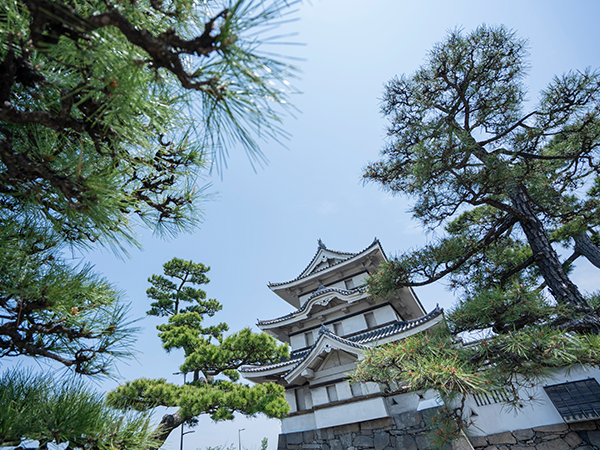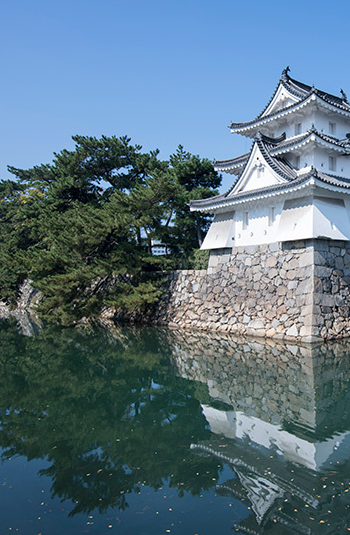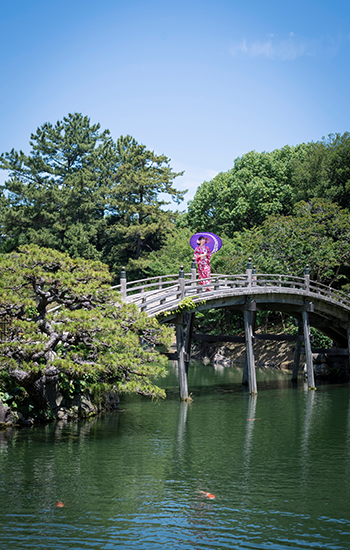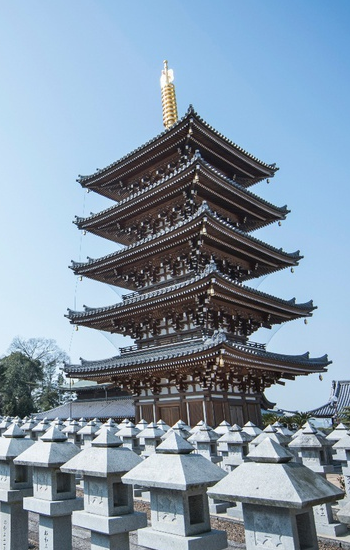Come Alive:
The Castle Town
by the Sea




Deeply connected to the Mito Domain, which was one of the three great collateral branches of the Tokugawa Shogunate family, eleven generations of the Matsudaira family governed Takamatsu for 226 years (1642-1868) in the Edo period. The Matsudaira Takamatsu Domain was rated at 120,000 koku (a koku was a unit of measurement in Japan that rated the productivity of land amounting to approx. 180 liters, 150 kilograms, 330 pounds, which was enough to feed 1 person for 1 year.) Takamatsu Castle, the Ritsurinso Villa, which is present-day Ritsurin Garden, the samurai residential area, and the rest of the castle town were developed during the Matsudaira’s governance. Also, traditional crafts had flourished including Kagawa lacquerware and the local stone industry with Aji stone.
For history lovers, it is recommended to visit Tamamo Park, the historic site of Takamatsu Castle, and Ritsurin Garden in the city center, and then go to south of the city to the historic town of Busshozan, home to the Matsudaira family temple, Honenji. You will be able to experience the history and culture unique to the castle town. Both are must-see spots that can be reached by public transportation for travelers.


